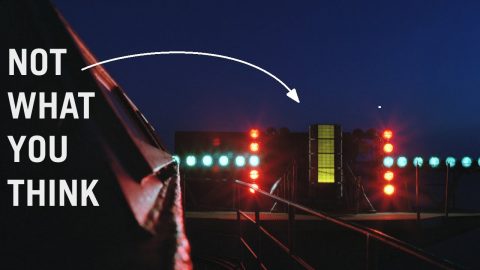
YouTube / Not What You Think
Have you ever wondered how planes land on aircraft carriers? When preparing to land, these planes are roughly at 85% throttle. Landing signal officers guide the pilot via radio with the help of the Fresnel Lens Optical Landing System. These lights give visual cues to approaching aircraft at various angles.
Pilots must maintain precise control of the aircraft’s speed, altitude, and approach angle during the approach. They must make constant adjustments to account for the carrier’s motion caused by waves, winds, and the ship’s own propulsion. The pilot’s ability to anticipate and react quickly to these dynamic conditions is vital to ensure a safe and successful landing.
If the aircraft approached at the correct angle, the pilot will see the “meatball” in line with the horizontal row of green datum lights. Here’s a better informative picture:

At touchdown, the pilot throttles at full power in case the tail hook doesn’t catch the arresting wires on the carrier. By doing this, the pilot allows the aircraft to have sufficient speed to take off again for a go-around if needed.
In addition to the arrested landing method, some advanced aircraft utilize a vertical landing or short takeoff and vertical landing (V/STOL) capability. These aircraft, such as the F-35B Lightning II, can land vertically or take off in a short distance, eliminating the need for arresting gear and enabling them to operate from carriers without traditional runways.